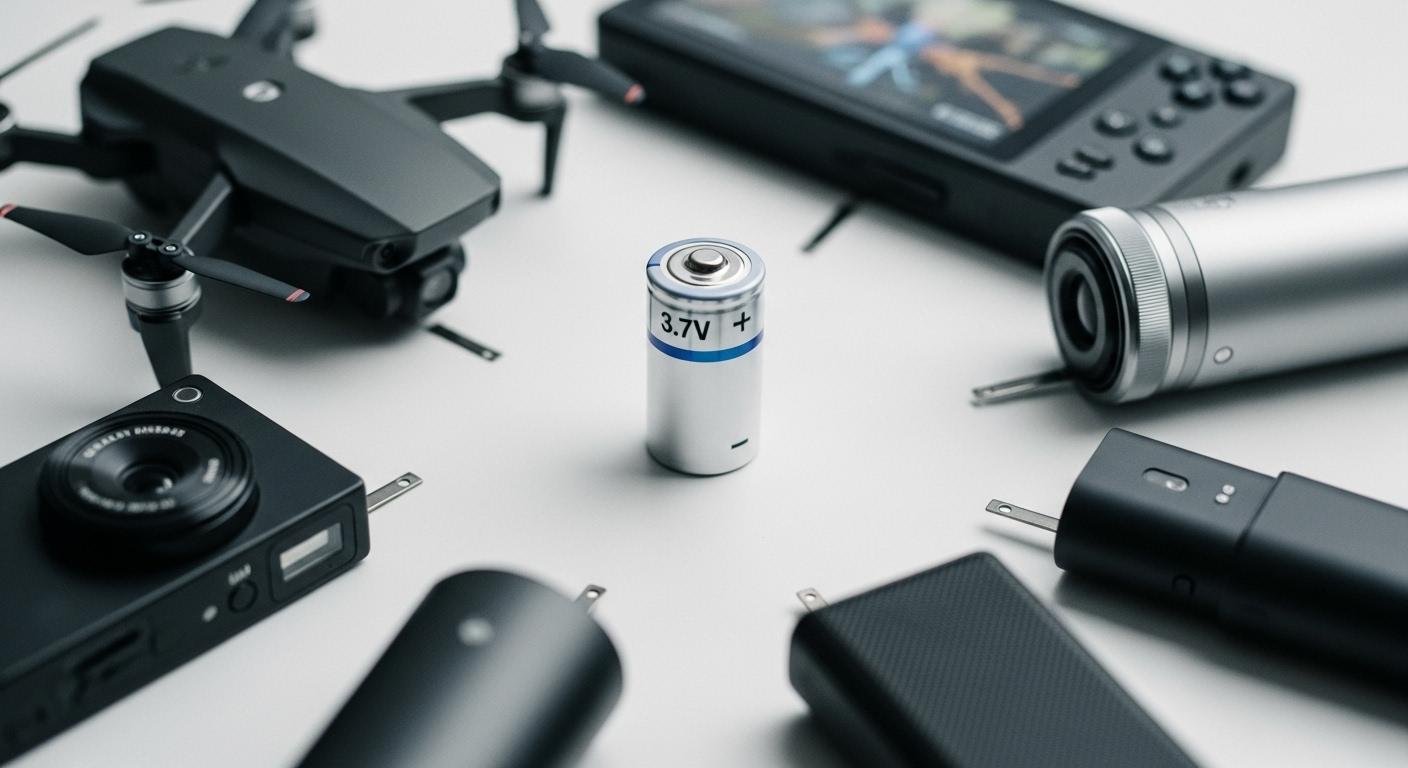
For most electronics and DIY projects, the 18650 cell is the top lithium ion battery. This versatile li-ion battery provides an ideal balance of energy and performance. However, some applications demand a different li-ion solution. You might need a thin li-ion pouch battery for compact gadgets or a high-discharge lithium-ion battery for power-hungry tools.
Note: Selecting the right 3.7V lithium ion battery is crucial for your DIY projects. Your choice of battery directly impacts both device performance and overall safety. This guide helps you pick the perfect li-ion battery.
Top 3.7V Battery by Use Case
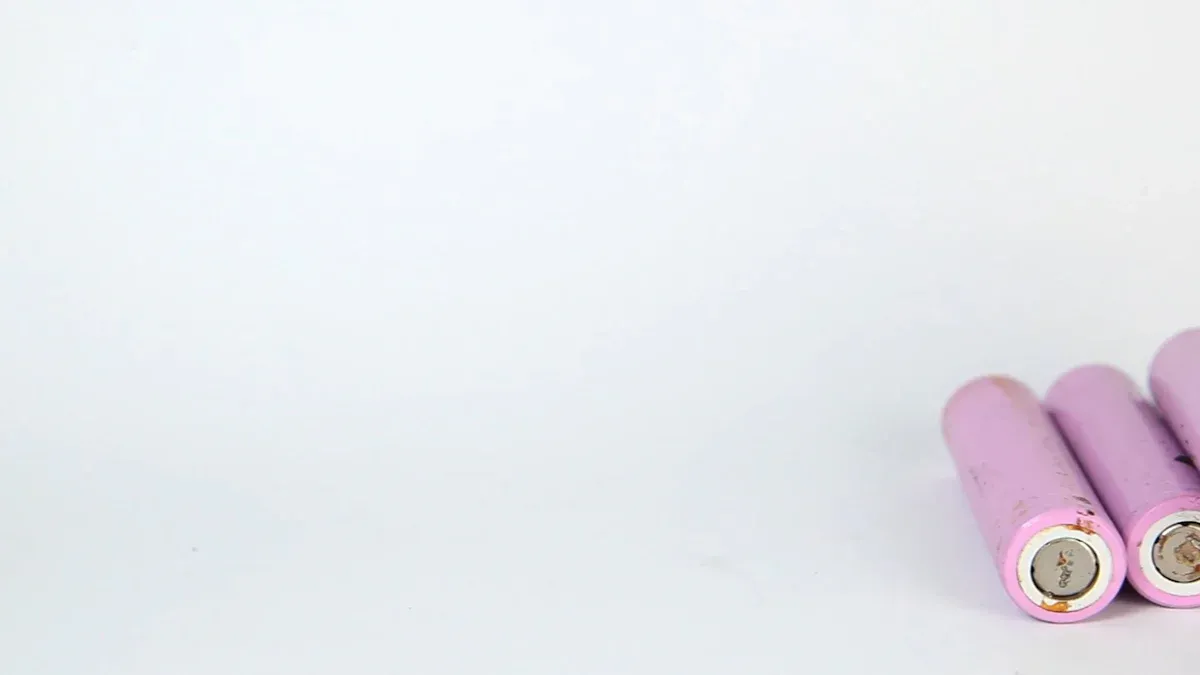
Choosing the right battery depends entirely on your project’s needs. You must match the battery’s strengths to your device’s demands for power, size, and runtime. Let’s explore the best 3.7V lithium ion battery types for different real-world applications.
18650 Cells: The All-Rounder
The 18650 li-ion cell is the workhorse of the electronics world. Its name describes its size: 18mm in diameter and 65mm long. You will find this lithium ion battery in everything from laptop battery packs to high-powered flashlights and DIY power banks. Its popularity comes from a fantastic balance of capacity, power output, and availability, making it a top choice for robotics and general DIY projects.
Different 18650 models offer different performance characteristics. Some prioritize maximum energy storage, while others deliver high power.
Pro Tip: Always check a cell’s datasheet. A battery designed for high capacity may not handle high-current demands well. For example, the Panasonic NCR18650B is an ‘Energy Cell’ with a massive 3400mAh capacity, perfect for long runtimes in low-power devices. However, its performance drops when you draw high current.
For balanced performance, the Molicel P26A is an excellent option. It has low internal resistance, which is key for efficiency and longevity. This battery delivers its energy effectively even under heavy loads, making it a reliable choice for demanding projects.
Here is a comparison of popular 18650 models to help you choose:
| Model | Capacity (mAh) | Max. Continuous Discharge | Best For |
|---|---|---|---|
| Panasonic NCR18650B | 3400 | 6.8A | High-Capacity, Low-Power (e.g., power banks) |
| Samsung 25R | 2500 | 20A | Balanced Performance (e.g., robotics, DIY) |
| Sony/Murata VTC6 | 3000 | 15A | High-Capacity & Good Power (e.g., e-bikes) |
| Molicel P26A | 2600 | 25A | High-Power & Durability (e.g., demanding DIY) |
LiPo Pouch Cells: Compact Power
When space is tight, you need a compact pouch lithium ion battery. Lithium Polymer (LiPo) batteries use a flexible, foil-like pouch instead of a rigid metal can. This design makes them incredibly lightweight and space-efficient. A LiPo battery is significantly lighter than a steel-cased li-ion battery of the same capacity.
Their main advantage is a customizable form factor. You can find them in countless shapes and sizes, making them perfect for devices where every millimeter counts. This flexibility is why you see them in:
- Wearable devices like smartwatches and fitness trackers.
- Smartphones and tablets that need thin, powerful batteries.
- Drones and RC vehicles where low weight is critical for flight performance.
- Portable medical equipment requiring lightweight and flexible power sources.
While a typical lithium-ion battery stores 150–450 Wh/kg, LiPo batteries for drones usually offer an energy density of 100–200 Wh/kg, prioritizing low weight for better agility. For wearables, ultra-thin LiPo cells can be less than 1mm thick while providing enough energy for sensors and trackers.
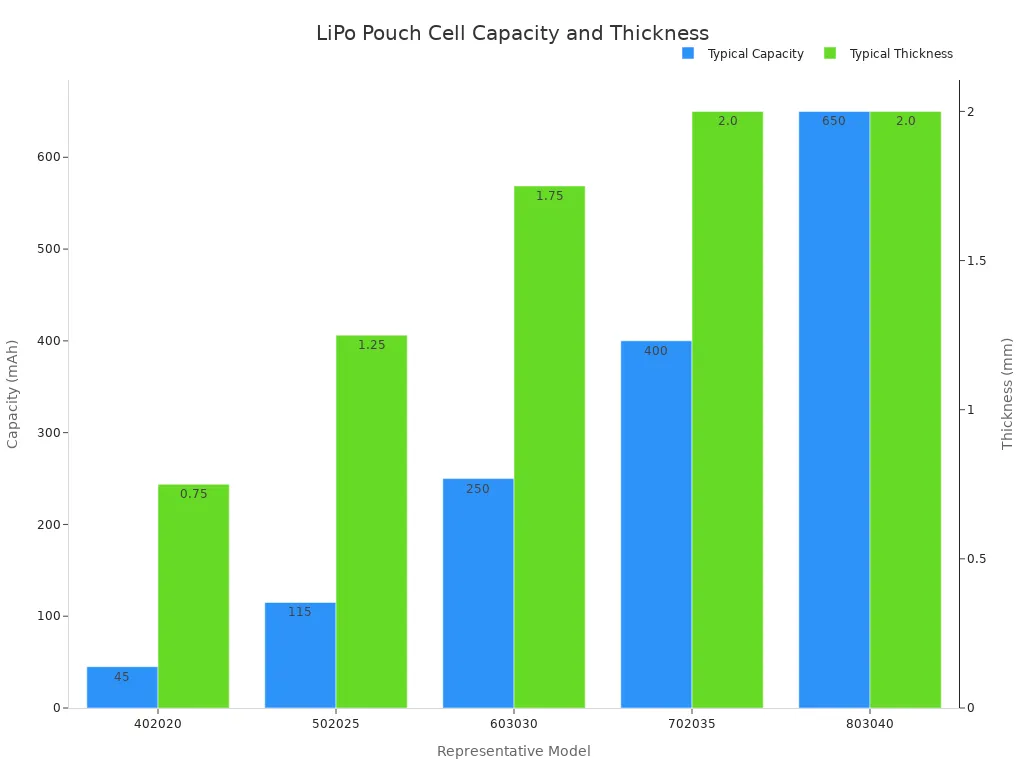
High-Discharge Cells: Maximum Power
Some applications need a massive burst of energy. This is where a high discharge rate lithium ion battery shines. These cells are built to safely deliver very high currents, measured by their “C-rating.” A 1C rating means a battery can discharge its entire capacity in one hour. A high-discharge li-ion battery might have a rating of 10C or more, allowing it to empty in six minutes or less.
You need this kind of power for:
- Power tools like cordless drills that require high torque.
- Vaping devices that use high current to heat coils quickly.
- RC models and drones that need powerful energy bursts for acceleration.
Top models in this category include the Molicel P28A and the Sony/Murata VTC5A. The Molicel P28A boasts a maximum discharging current of 35A. However, you should operate it at 25A or lower for better performance and longevity, as the 35A rating is for short bursts. The Sony VTC5A is another excellent choice, offering a 25A continuous discharge rate. Its robust design provides consistent performance under heavy load, making it a favorite for high-drain applications.
14500 & 10440 Cells: Small Gadgets
What if your project is too small for an 18650? You can turn to smaller cylindrical cells like the 14500 and 10440.
The 14500 li-ion battery has the same dimensions as a standard AA battery (14mm x 50mm). It offers a nominal voltage of 3.7V and capacities typically around 800mAh. This makes it a great upgrade for high-power LED flashlights and some cameras designed to handle the higher voltage.
The 10440 li-ion battery is the same size as a AAA battery (10mm x 44mm). It also provides a powerful 3.7V, which is much higher than the 1.2V or 1.5V of a standard AAA. This high voltage makes it ideal for tiny, high-drain devices like laser pens and miniature DIY electronics. Some of these small batteries come with pre-attached connectors, like the common PH2.0/2P, which simplifies integration into your projects.
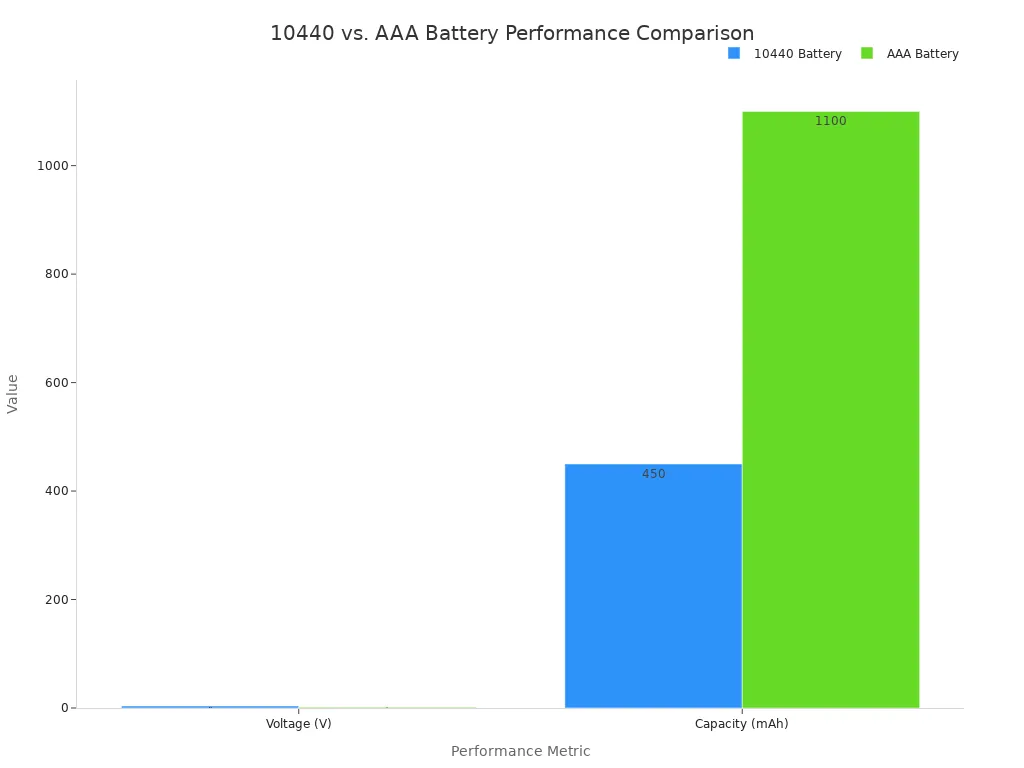
Safety Warning: Never use a 3.7V lithium ion battery like a 14500 or 10440 in a device designed for 1.5V AA or AAA batteries unless the manufacturer explicitly states it is safe. The much higher voltage will likely destroy the electronics.
Choosing the Right 3.7V Li-ion Battery
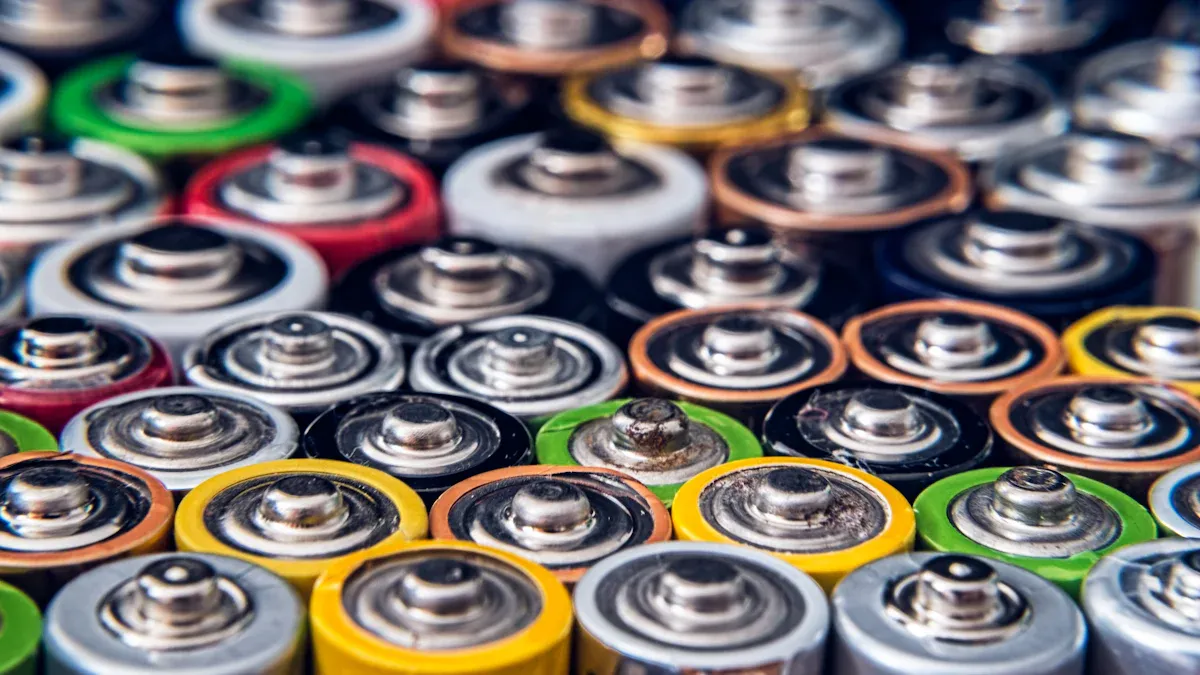
Selecting the perfect 3.7V lithium ion battery involves more than just matching a model number. You need to understand a few key specifications. This knowledge ensures your DIY projects have the right power, performance, and safety.
Capacity (mAh) Explained
Think of a battery’s capacity, measured in milliamp-hours (mAh), as its fuel tank. A higher mAh number means the battery stores more energy and can power your device for a longer time. You can estimate runtime with a simple formula:
- Runtime (Hours) = Battery Capacity (mAh) / Device Current (mA)
For example, a 2000mAh lithium ion battery will power a device drawing 100mA for about 20 hours. This calculation gives you a good starting point for choosing a battery with enough energy for your needs.
Discharge Rate (C-Rating) Explained
The C-rating tells you how fast a battery can safely deliver its energy. A higher C-rating is essential for high-power applications like drones or power tools. You calculate the maximum current using this formula:
Using a li-ion battery with a C-rating that is too low for your device is dangerous. It can cause the battery to overheat, swell, or even fail, damaging your electronics. Always match the C-rating to your device’s power demands for optimal performance and safety.
Size and Form Factor
The physical size of a lithium-ion battery is a critical choice. Cylindrical cells have standard names that tell you their dimensions.
LiPo pouch cells offer more flexibility, as they can be made in thin, custom shapes. This makes them ideal for compact devices where space is limited.
Protected vs. Unprotected Cells
A protected button top lithium ion battery includes a small electronic circuit. This circuit provides critical lithium ion battery safety features:
- Overcharge Protection: Stops charging when the voltage is too high.
- Overdischarge Protection: Stops power when the voltage is too low.
- Short Circuit Protection: Cuts power instantly if a short occurs.
Unprotected cells, like a flat top lithium ion battery, lack this circuit. They are used in custom battery packs that have an external battery management system. A protected rechargeable lithium ion battery is slightly longer, so you must check if it fits your device.
The Role of a Battery Management System
For any project using multiple li-ion cells, a battery management system (BMS) is essential. A BMS is an intelligent circuit board that goes far beyond basic protection. A battery management system li-ion actively monitors and manages every cell in the pack.
| Feature | Basic PCM | Advanced BMS |
|---|---|---|
| Cell Balancing | No | Yes |
| Temperature Monitoring | No | Yes |
| State-of-Charge Data | No | Yes |
| Communication | No | Yes |
The battery management system li-ion ensures all cells charge and discharge evenly. This “cell balancing” is vital for the pack’s longevity and performance. A good battery management system li-ion prevents damage, maximizes efficiency, and is the most important safety component for your multi-cell 3.7v lithium ion battery packs. The BMS is the brain of your lithium-ion battery.
Choosing the right 3.7v lithium ion battery is simple when you match it to your needs. The 18650 li-ion battery remains a versatile choice for general DIY projects. You should select thin LiPo cells for compact designs and powerful high-discharge cells for demanding tools that need more energy.
Final Safety Tip ⚠️ Your most important takeaway is to always prioritize safety. Double-check your device’s required size, capacity, and discharge rate. For any DIY project, you must use a protected lithium-ion battery with a built-in battery management system (BMS). A proper battery management system (BMS) is key. Always use a dedicated li-ion charger with safety features for all charging. A quality battery management system (BMS) and a safe battery management system (BMS) will protect your li-ion battery and your project.
FAQ
Can I use any 3.7V battery in my device?
No. You must match the battery’s size, discharge rate (C-rating), and capacity (mAh) to your device’s needs. Using the wrong battery can damage your electronics or be unsafe. Always check the device specifications before choosing a battery.
How do I charge my lithium-ion battery safely?
You should always use a charger made specifically for lithium-ion cells. These chargers have safety features to prevent overcharging. Never leave a charging battery unattended. Proper charging extends the life of your battery and keeps you safe.
What does “nominal voltage” mean for a 3.7v lithium ion battery?
Nominal voltage is the average voltage of the battery. A fully charged battery starts around 4.2V and drops to about 3.0V when empty. The 3.7V value represents the typical operating voltage of the battery during its discharge cycle.
Why is my new battery longer than the old one?
Your new battery is likely a “protected” cell. These have a small safety circuit board added to one end. This circuit prevents overcharging and over-discharging. The extra length comes from this important safety feature on the battery.

